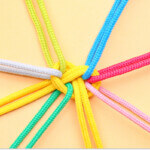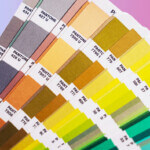A huge part of being more creative involves developing a belief in your own creativity. Confidence is crucial for creativity. It gives you the courage to pursue your ideas and the resilience to face inevitable setbacks.
Unfortunately, many factors can chip away at your creative confidence and leave you wondering if you’re capable of being creative at all. But whether you’re in an overtly creative role or not, improving confidence in your creativity will significantly impact your ability to solve problems and come up with fresh ideas.
Here are the main reasons people struggle with creative confidence and actionable strategies you can use to help build yours.
What is Creative Confidence?
Creative confidence is the courage to be creative and to keep being creative through successes and setbacks.
Confidence is the factor that supports and furthers creative thought and helps turn ideas into reality. It’s key to every part of the creative process. Confidence gives you the courage to try new things and gain the new experiences that fuel creative ideas. It allows us to believe that our ideas are valuable and worth pursuing.
And when an idea (inevitably) doesn’t turn out the way you hoped, confidence can give you the strength to move on and try something else, letting you fail well.
Creative confidence has a powerful role to play in how you respond to unexpected problems. People with high amounts of creative confidence will be able to remain far calmer when things go wrong, as they know they’ll be able to, given time, think of a creative solution. This is why creative confidence is so valuable, even if your day-to-day life doesn’t seem to call for much creativity.

Tom Kelley, who literally wrote the book on Creative Confidence, says, “that combination of thought and action defines creative confidence: the ability to come up with new ideas and the courage to try them out.”
Why Many Struggle with Creative Confidence
Most children will happily try new things, scribble ideas down, and express themselves loudly. As they get older, though, this creative urge seems to wither away, leaving many adults thinking they aren’t capable of being creative at all.
Kelley believes that fear is often to blame. This fear can take a variety of forms, including fear of being judged, fear of getting started, and even fear of losing control. These anxieties become particularly acute as people get older and strive to be responsible adults and professionals.
Emotional barriers don’t just keep you from starting but also from carrying on. For example, you may begin a creative project with confidence but suffer a setback that allows imposter syndrome to creep in.
“Impostor Syndrome: a psychological condition that is characterized by persistent doubt concerning one’s abilities or accomplishments accompanied by the fear of being exposed as a fraud despite evidence of one’s ongoing success.”
Being creative means exposing yourself to all sorts of complications and failures, introducing fear into the equation, and negatively impacting your resilience. As Sylvia Plath said, “The worst enemy to creativity is self-doubt”.
It’s hard to accept that a false start or a failure does not mean you lack the necessary creative ability. In the face of all this anxiety, it can feel easier or simpler just to tell yourself that you aren’t creative at all. If you find yourself in this self-destructive cycle, try to remember that a lack of confidence does not equal a lack of creative ability.
How to Develop Creative Confidence
Fortunately, creative confidence is something you can work on. The method is very simple: just keep being creative.
This might sound far easier said than done, but there are strategies you can use to help tackle your lack of confidence while also flexing your creative muscles. Here are 6 of our favorites:
1. Do It In Stages
In his TED Talk on creative confidence, David Kelley tells a story about psychologist Albert Bandura. Bandura had people who feared snakes approach the reptiles in stages. For example, they started by viewing a snake from afar, then a bit closer, then handling a snake themselves with gloves, and finally handling it with bare hands. Each step brought them closer to directly interacting with the snake.
The person’s self-belief in their ability to face the fear gradually increased until they were ready to take on the real thing.
Using this technique of “guided mastery” and “self-efficacy”, Kelley believes you can leave behind your inhibitions. So, try giving yourself small goals to strengthen your self-belief. For example, if you want to write a book, start by journaling just a little every day. Work your way up to writing blog posts or short creative pieces.
When you want to move on to something bigger, break it down into manageable chunks.
2. Practice, Practice, Practice
Thinking creatively is only one part of the process – you also need the skill or craft to express your creativity.
Concepts like the 10,000 Hour Rule (whether entirely accurate or not) are helpful reminders that those skills require time and dedication to develop. It’s not a question of being something or something you “have” or “don’t have”.
Practice will help you develop the skills you use to express your creativity.
As you work on your writing, painting, or guitar playing, your performance will start to match (or even surpass) the pre-conceptions you have in your head. In turn, this will expand your belief in what you’re capable of. It will also keep you from becoming frustrated or discouraged.
Practice propels productivity, even when the creative ideas don’t seem to be flowing.
3. Add Structure
Sometimes the scariest thing about starting something new is not knowing how it will take shape. What will getting there look like? Mitigate this by imposing structure on your process.
You could try a creative routine or ritual where you help your brain get used to being creative in a particular place at a particular time. Or, you could also try a creative constraint such as setting a timer or deadline.
These strategies will give you a process to solving creative challenges rather than trying to wrestle with the unknown – thus building confidence over time.
4. Keep it Varied
Having your experience of creativity centered on one skill, job, or project is a double-edged sword.
While being able to call yourself an expert can give you a valuable sense of confidence, it also means your sense of your own creativity is inexorably linked to one area of your life. If you experience a serious setback, you’re likely to doubt not only your ability in your role but also your overall creativity.
To balance things out, spend time on creative activities that don’t have anything to do with your main goals. For example, if you’re a professional writer, do some sketching. If you’re a designer, try acting classes. If you’re a marketer, work on your calligraphy.
This is sometimes called ‘creative cross training’. Not only will it help you see your creativity more broadly and holistically, but it could also positively affect your main creative activity by giving you new insights.
5. Expose Yourself to the Unknown
Rather than actively searching for inspiration or trying to be inventive, feed your creative brain by exploring and learning without a set purpose.
By opening yourself up to new experiences without the need to instantly relate them to a specific creative endeavor, you’ll take the urgency and fear of failure out of your search for inspiration. If you approach creativity as a voyage of discovery rather than a straight path to a definite goal, the fear of getting started and getting lost along the way will lessen.
After doing this for a while, you’ll find creative ideas come far more naturally. Those moments of organic inspiration will give you a powerful sense of confidence in your own ability to think creatively.

6. Focus on the Joy of Creativity Itself
People usually see creativity as a means to an end: it’s what drives us to make something wonderful and original. But this means that they may overlook the inherent value of being creative for creativity’s sake. Being creative boosts our mood, helps us process, and might even improve our health.
Rather than aiming for a particular result, just set aside time ‘to be creative’ solely for the sake of creativity. For example, you could doodle, paint, journal, or even put your own spin on a dish in the kitchen.
Doing this will help adjust your internal definition of creativity so that performance and result-related anxieties have less sway over your thinking. Creative confidence shouldn’t rely on results (entirely), and those results certainly shouldn’t be given the power to destroy it.
Prioritizing Your Creative Confidence
Many things can eat away at your creative confidence, often without you even being aware. Fortunately, it’s possible to regain and maintain it just by actively focusing on being creative.
By rebuilding and maintaining your creative confidence, you’ll improve your chances of coming up with winning ideas and seeing them through to completion. You’ll also become more resilient in the face of failure, more comfortable exploring the unknown, and more fulfilled by your creative activities.






